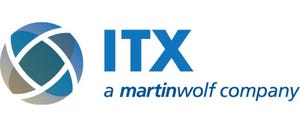Top 5 Value Drivers for IT Businesses
Here's what you should know about the top five value drivers before selling your IT business.
November 11, 2022

IT business owners/operators who are thinking of selling should consider these top five drivers to command the highest possible transaction value.
Are you planning on selling your IT services business during the next 12 to 24 months? Maximizing value requires a well-thought-out road map and communication plan before entering the market. Owner/operators should consider these top five drivers to command the highest possible transaction value.
#1 – Revenue Growth
Revenue is a key value driver. Buyers often backbend when evaluating businesses demonstrating stagnant growth and the inability to scale. Buyers value organic growth, which means accelerating sales without acquisition add-ons. In fact, steady organic growth north of 20% leads buyers to a premium.
In addition to solid revenue growth, recurring revenue of 75% or more by an IT services business demonstrates stability and mitigates risk for buyers. Study your income statements from the past few years. Is revenue consistently increasing, or is it flat and fading? While all IT businesses are salable, those with steady home-grown revenue growth “up and to the right” yield the highest value.
#2 -Margins
Increasing revenue is important, but if a material amount of sales doesn’t translate to profits, red flags will fly as buyers evaluate your business. Prospective buyers look at various profit margins — including gross profit, operating profit and net profit. When an analysis shows flailing financials, buyers will be hesitant about the acquisition and at the very least more conservative with a purchase price should they move forward with an offer.
An ideal range for your gross margins should be between 50% and 55%. High-flying SaaS companies, in particular, are expected to show gross margins between 70% and 80%. Operating profits for the average IT-enabled business run between 10% and 12%, with those commanding the highest valuation reaching 20% or more. Net profit margins for IT businesses should range no less than 9% to 11%.
#3 – Customers
Buyers perceive risk when a majority of your revenue is generated by only a few clients (customer concentration). If one of those clients goes out of business or elects to move to another IT vendor, what happens to your total revenue? Realistically speaking, no business owner is going to refuse revenue from a large whale just to achieve acceptable customer concentration ratios, but it’s worth monitoring. Once revenue from a single customer surpasses 17% to 20%, double down on business development to dilute the total percentage of that large client.
Minimizing customer concentration to single-digit numbers increases the value of your business. In addition, track how much revenue is generated by your top 10 customers. You want the total percentage from your top 10 to be less than 50%, showing buyers you have a stable solid strategy in place.
Customer churn is also considered when valuing a business. The optimal range is between 5% and 7% per annum. Client net dollar retention, which illustrates strength and consistency of services lines, should be at 90%. This incorporates growth and customer churn, otherwise known as the “happy customer index.”
#4 – People
High employee turnover, large replacement costs, low workplace morale and lagging communication all negatively impact value. The goal is to motivate, reward and retain key employees, knowing most people quit their managers before they quit their company.
To replace a valued employee costs 110% to 130% of that person’s total comp + loss opportunity cost + training + institutional memory.
Even though the industry average is between 10% and 13%, the ideal employee turnover for IT-enabled businesses should be less than 5%. Studies show that this is routinely achieved when business principles focus on building something far bigger than any individual, and employees feel a sense of excellence, contribution and meaning.
#5 – Growth Markets
Pursuing the next high-growth market does not happen by chance. It takes vision, research, timing and a bit of luck. IT-enabled businesses in the artificial intelligence, cloud, security, mobile and SaaS sectors remain hot.
(Sidenote about AI: If you’re not using or planning to use AI, you’re already behind.)
When buyers evaluate your company, they want to see innovation already in process. This could be replacing a portion of your data entry burden with automation or moving your systems to the cloud. Taking a proactive approach to entering growth markets is an imperative value driver.
Let’s Talk
If you’d like to discuss the sale of your IT business, reach out to one of my team members today for a free consultation. We have sold more smaller mid-market IT-enabled businesses than anyone in the sector. Celebrating our 25th year in business, our firm has sold more than 230 IT businesses in 20 countries.
Tim Mueller is president of ITX.
This guest blog is part of a Channel Futures sponsorship.
About the Author(s)
You May Also Like



